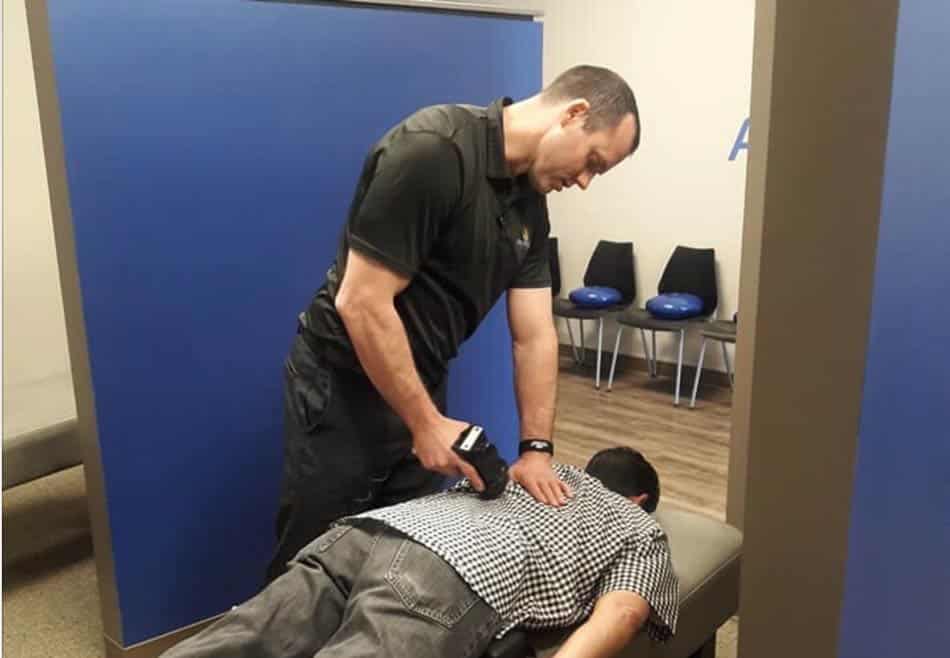Written By: Dr. Jason Bergerhouse, D.C.
Migraines are terrible. If you live in Folsom or the surrounding communities you can be more susceptible to a Migraine. Don’t give up… Here are some Simple, Drug Free TIPS for MIGRAINE RELIEF Enjoy and Share www.thrivespinecenter.com
As a healthcare professional, I have witnessed countless patients who struggle with chronic headaches and migraines. The debilitating pain, coupled with the disruption it causes in daily life, makes it imperative for individuals to find effective solutions. One promising avenue for migraine relief is trigger point therapy, a form of acupressure that involves applying pressure to specific points on the body to alleviate pain and tension. In this article, I will guide you through two powerful trigger point exercises that can help relieve headaches and migraines.
Understanding Pressure Points, Headache and Migraines
Before delving into the exercises themselves, let’s understand what trigger points are and how they relate to headaches and migraines. Trigger points are hyperirritable knots within muscles that can cause referred pain in other areas of the body when stimulated. When it comes to headaches and migraines, these trigger points are often found in the neck and upper back muscles.
How Trigger Points Cause Headaches
Understanding the science behind trigger points and their role in causing headaches can shed light on the effectiveness of trigger point therapy for relief. When trigger points develop in the neck and upper back muscles, they can refer pain to the head, leading to headache symptoms.
The Physiology of Trigger Points: Trigger points, also known as myofascial trigger points, are hyperirritable spots within muscle fibers. These points may form due to muscle overuse, trauma, or stress, creating areas of tension and restricted blood flow. When pressure is applied to these trigger points, they can release stored tension and alleviate pain.
Referral Pain Mechanism: Trigger points have a unique characteristic: they can refer pain to other areas of the body. In the context of headaches, trigger points in the neck and upper back muscles can refer pain to the head. This referred pain often mimics the symptoms of tension-type headaches or migraines.
Neck Muscles and Headaches: The two vertical neck muscles, the sternocleidomastoid (SCM) and the trapezius, are frequent culprits when it comes to trigger points causing headaches. Tension in these muscles can radiate pain to the head, resulting in head pain, tightness, and discomfort.
The Science of Trigger Point Therapy
Trigger point therapy is rooted in a scientific understanding of the body’s muscular and nervous systems. It has a historical connection to acupuncture and has gained recognition through academic research institutions and randomized controlled trials.
Historical Background: Trigger point therapy shares similarities with acupuncture, a traditional Chinese healing practice. Both therapies involve stimulating specific points on the body to alleviate pain and promote healing. While acupuncture uses needles to target these points, trigger point therapy relies on the application of manual pressure.
Academic Research: Over the years, trigger point therapy has garnered attention from academic research institutions and healthcare professionals. Researchers have conducted randomized controlled trials to assess its effectiveness in treating various types of headaches, including tension-type headaches and migraines. These studies have provided valuable insights into the efficacy of trigger point therapy for headache relief.
Support from Headache Specialists: Headache specialists, often associated with organizations like the American Migraine Foundation, recognize the potential of trigger point therapy for headaches and migraines. They may incorporate trigger point therapy into their treatment plans for patients with chronic tension headaches, chronic migraines, or other headache disorders.
Incorporating trigger point therapy into your migraine management plan is not just a holistic approach; it’s also supported by scientific principles and research findings.
Preparing for Trigger Point Exercises For Easy Relief
Before you start the exercises, it’s crucial to be adequately prepared. Here are some essential tips to ensure you have a successful session:
1. Gathering the Necessary Supplies
You won’t need much for these exercises – just a quiet, comfortable space and your hands. You may want to use some massage oil or lotion for added comfort during the massage. Additionally, a chair or yoga mat can provide support during the exercises.
2. Creating a Conducive Environment
Find a quiet space where you can relax without distractions. Dim the lights, put on some calming music, and ensure you won’t be interrupted during your session. A peaceful atmosphere can enhance the effectiveness of the exercises.
3. Safety Precautions and Considerations
If you have any underlying medical conditions or are unsure about whether trigger point therapy is suitable for you, consult a healthcare professional before beginning these exercises. Safety should always be a top priority.
Now, let’s move on to the two trigger point exercises that can provide much-needed relief from headache and migraine pain.
Exercise 1: Massage Your Occiput at the Base of Your Neck
The occiput is the bony prominence at the base of your skull, where it meets the uppermost part of your neck. This area often holds tension, making it a prime target for migraine relief.
Step 1: Begin by sitting in a comfortable position and taking a few deep breaths to relax.
Step 2: Using the fingers of both hands, apply firm pressure to the occiput area. You can use your thumbs or the heels of your palms, whichever feels more comfortable.
Step 3: Start massaging in small, circular motions. Gradually work your way across the entire occiput area, paying close attention to any particularly tender spots.
Step 4: Continue massaging for 5-10 minutes or until you feel a significant reduction in tension.
The occiput is an excellent starting point for migraine relief, as tension in this area can contribute to headache pain. Regularly massaging this area can help reduce the frequency and intensity of headaches.
Exercise 2: Massage Sternocleidomastoid Muscle (SCM)
The sternocleidomastoid muscle, often abbreviated as SCM, is a long muscle that runs down the sides of your neck. Tension in the SCM can lead to headaches and migraines, making it essential to target during trigger point therapy.
Step 1: Sit or stand comfortably and take a few deep breaths to relax.
Step 2: Use your fingers or thumb to locate the SCM muscle on one side of your neck. It runs from just behind your ear down to the collarbone.
Step 3: Apply gentle but firm pressure to the SCM muscle and massage it in a downward motion. Focus on any knots or tight spots you may encounter.
Step 4: Continue massaging for 5-10 minutes, then switch to the other side of your neck and repeat the process.
By massaging the SCM muscle, you can release tension in the neck and shoulders, which can significantly alleviate headache and migraine symptoms.
Combining Trigger Point Exercises
While these exercises can be effective on their own, combining them can provide even greater relief. Massaging both the occiput and SCM muscles in a single session can help address tension in the head and neck comprehensively.
I recommend performing these exercises daily or as needed, depending on the intensity and frequency of your headache or migraine attacks. Listen to your body, and adjust the frequency and pressure as necessary.
Additional Trigger Points for Migraine Relief
While we’ve discussed trigger points in the occiput and SCM muscles, there are other trigger points on the body that can help alleviate migraine symptoms. These additional points can be targeted through acupressure, expanding your options for relief.
Hands: The hands have several pressure points that, when stimulated, may help reduce headache symptoms. Points located in the webbing between the thumb and index finger or along the fingers can be massaged to provide relief.
Feet: The feet also contain pressure points that can be used for headache relief. Massaging the areas between the toes or applying pressure to specific points on the soles of the feet may help alleviate headache symptoms.
Other Body Areas: In addition to the head, neck, hands, and feet, there are pressure points located in various regions of the body. These points may help reduce pain and tension associated with migraines when stimulated correctly.
Exploring these additional trigger points and incorporating them into your self-care routine can provide a more comprehensive approach to managing migraine symptoms.
Incorporating the scientific understanding of trigger points, their role in headaches, and additional trigger points for pain relief into your migraine management strategy can enhance your ability to find effective and natural relief from cluster headache and migraine pain.
Additional Tips for Migraine Headache Management
In addition to trigger point therapy, there are several lifestyle changes and practices that can help you better treat headache and migraine:
- Dietary Considerations: Identify and avoid migraine triggers in your diet, such as certain foods, beverages, or additives.
- Stress Reduction: Practice stress-reduction techniques, such as yoga, meditation, or deep breathing exercises, to minimize tension and stress that can trigger migraines.
- Medication: In some cases, medication prescribed by a healthcare provider may be necessary to prevent or alleviate migraine symptoms.
Frequently Asked Questions (FAQs)
Here are answers to some common questions about trigger point exercises for migraine relief:
What are pressure points for headaches, and how do they relate to trigger point therapy?
Pressure points for headaches are specific areas on the body where applying pressure can help alleviate headache and migraine symptoms. These points are often related to trigger points, which are hyperirritable spots in muscles. Trigger point therapy involves using pressure to stimulate these points, which can help relieve tension and pain associated with headaches.
Can trigger point therapy prevent migraines altogether, or is it mainly for immediate relief during an attack?
Trigger point therapy can be used both for immediate relief during a migraine attack and as a part of a holistic approach to prevent migraines. Regularly practicing trigger point exercises may reduce the frequency and intensity of migraine attacks over time, making it a valuable tool for long-term migraine management.
How can I locate the pressure points and trigger points for migraine relief?
Locating pressure points and trigger points for migraine relief may require some guidance. Online resources, books on acupressure, or consulting with a healthcare professional who specializes in trigger point therapy can help you identify these points accurately. Many trigger points are located in areas such as the neck, shoulders, hands, and feet.
Are there any other complementary therapies or practices, like yoga or massage therapy, that can be combined with trigger point exercises for better results in managing migraines?
Yes, complementary therapies like yoga poses and massage therapy can complement trigger point exercises for migraine relief. Yoga can help reduce overall tension and stress, while massage therapy can target specific trigger points. Combining these practices with trigger point therapy may bring added relief for people living with migraines.
How strict are the sourcing guidelines for trigger point therapy information and advice?
When seeking information on trigger point therapy for migraine treatment, it’s essential to prioritize reputable sources and healthcare professionals. Look for information from trusted medical websites, academic research institutions, and healthcare providers who specialize in headache disorders. Strict sourcing guidelines ensure that the information you receive is accurate and evidence-based, increasing the likelihood of effective migraine management.




